




Why Do We Need Bones and Muscles?
The bones and muscles of the human body are what brick and cement are for a building. They help in our structural organization and movements.
Imagining yourself to be a clump of muscles and tissue without bones or the muscular framework must be a morbid view.
It is interesting to note that we are made up of around 206 bones and almost thrice the number of muscles, a whopping 600! We’ll look into the longest muscle in the human body, bones, and the list goes on. Let’s jump right in.
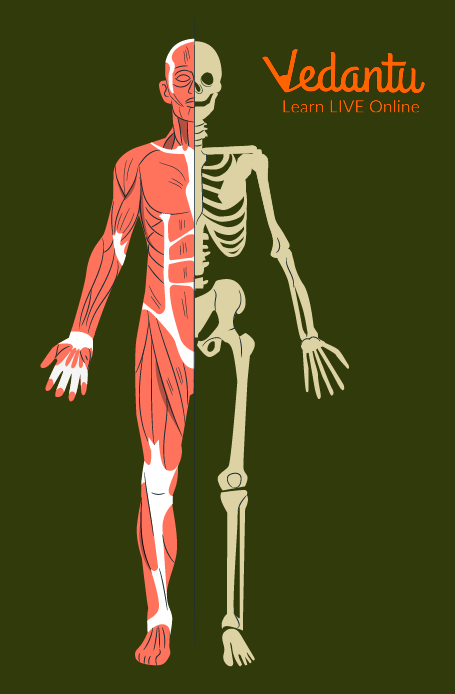
Bones and Muscles of Our Body
The Human Skeletal System
Let’s first understand the definition of the skeletal system. All the bones present in your body along with supporting structures like the tendons, ligaments, cartilages, and other connective tissues can be collectively called the skeletal system.
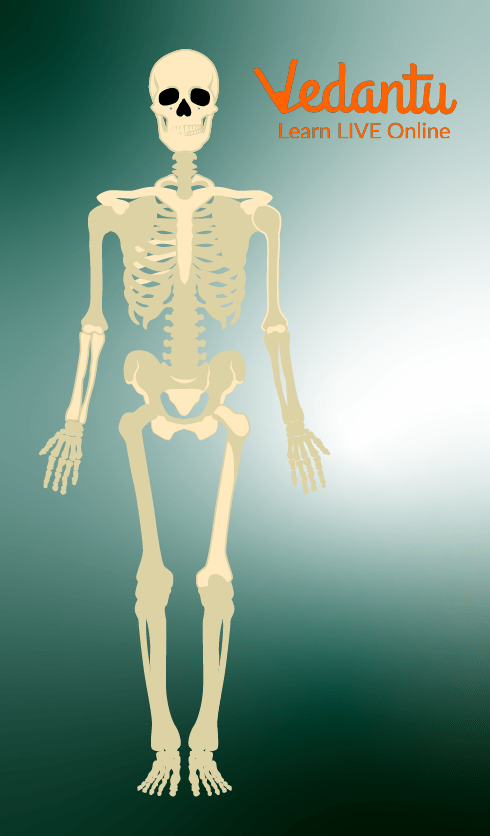
Skeletal System
Components of Skeletal system
Apart from bones, several parts also help the effective functioning of the skeletal system. These include the following:
Tendons (connective tissue connecting a muscle to a bone).
Ligaments (connective tissue connecting two bones).
Cartilage (coating which prevents friction at joints).
Joints (a structure where bones meet).
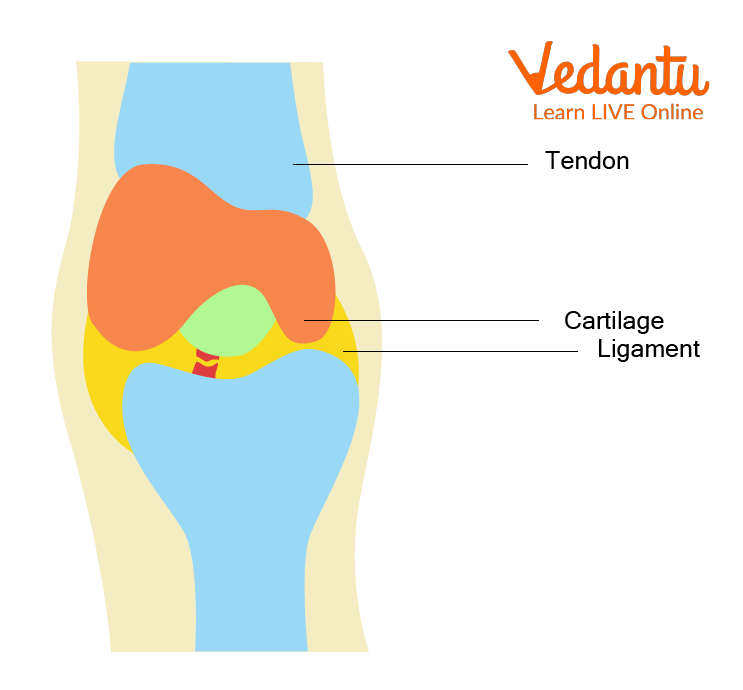
Tendon, Ligaments and Cartilage Present in a Join
Types of Bones
There are 206 bones present in the body that are classified on various bases. Some of these include based on function, shape, location, etc.,
Based on the Location
Axial skeleton (axial meaning forming the main axis) eg., brain and vertebrae.
Appendicular skeleton (appendicular meaning projecting from the axis) eg., bones of arms and legs.
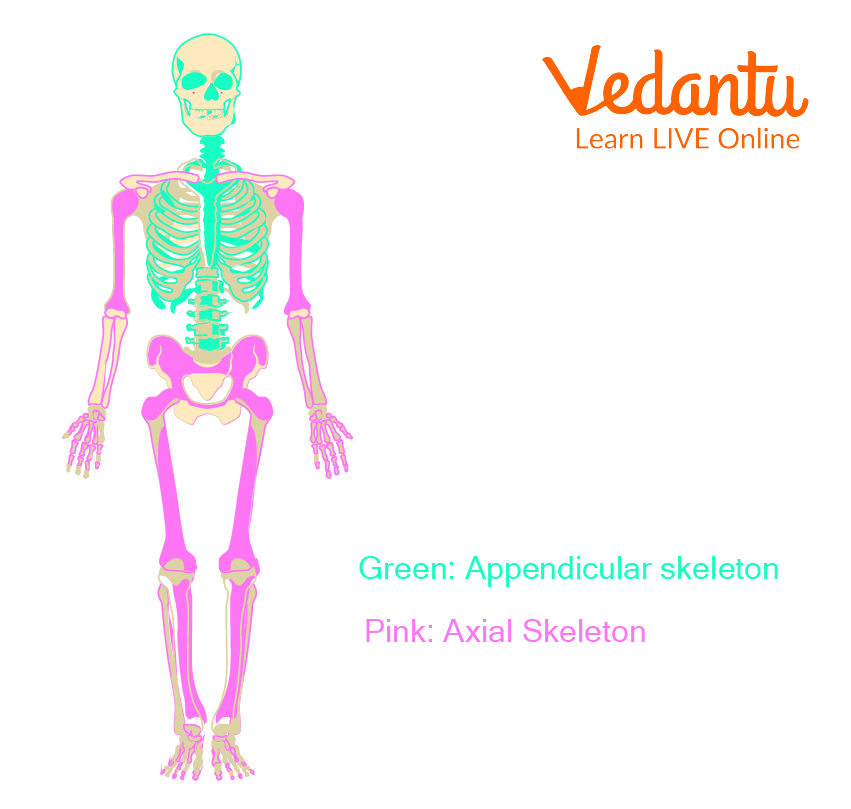
Types of Bones (Based on Location and Shape)
Based on Shape
Long bone (eg., thigh bone)
Short bone (eg., bones of fingers)
Irregular bone (eg., vertebrae)
Flat bone (eg., knee-cap bone)
Round bone (eg., knee bone)
Functions of Bones
It gives a proper framework to our body.
It supports the weight of our body and helps us move around along with tendons and ligaments.
It acts as a storehouse of important nutrients like calcium, magnesium, and Vitamin D.
It helps the production of blood cells like the red and white blood cells in the bone marrow
It protects vital organs like the brain, heart, lungs, kidneys, etc.
It also helps store and obtains fats as per the needs of the body.
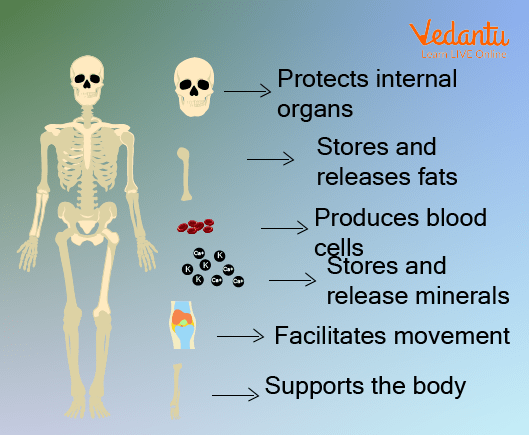
Function of Bones
How to Maintain Bone Health?
It is important to take good care of our bones and supporting structures for healthy living. Some ways are:
Regular exercise.
Drinking plenty of water.
Consume green leafy vegetables and milk to ensure the required nutrients.
Getting the required amount of Vitamin D (morning and evening sunlights are the best sources of vitamin D).
Muscular System
Your body is made up of around 600-650 muscles which have a very versatile function to play. They help perform varied tasks. All these muscles bring about the muscular system of our body.
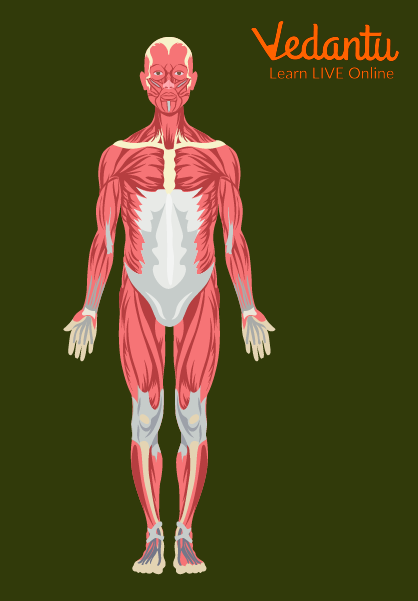
Muscular System of the Body
Types of Muscles
Muscles are classified as follows based on their function:
What is a Skeletal Muscle? These muscles are voluntary in control, meaning you can move and rest these muscles as per your will. Skeletal muscles are present close to your bones. They help with posture, movement, balance, weight-bearing, etc. These are also called ‘voluntary muscles’ as they are under voluntary control. The longest skeletal muscle in human body is placed in your thigh
What is a Smooth Muscle? These muscles are involuntary in control, meaning you cannot move and rest these muscles as per your will. They are present inside vital organs like the stomach, uterus, etcThey bring about digestion, excretion, etcThese are also called ‘visceral muscles’ as they are related to organs.
What is a Cardiac Muscle? The hero of organs, the heart has a special type of muscle itself named after it. These muscles are involuntary in control, and they are involved in the contraction and relaxation of the heart. They play an important role in blood circulation.
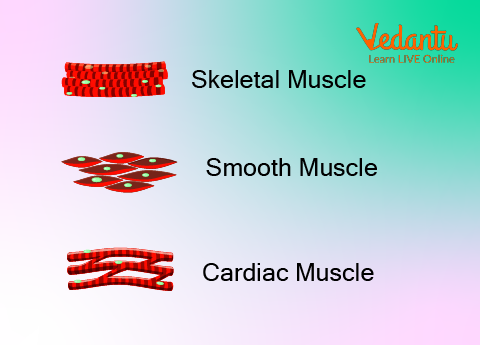
Types of Muscle Tissue
Functions of Muscles
Muscles are so versatile in function. They help in all the processes of the body. Some of these are listed below:
Breathing
Digestion
Removal of wastes
Movements
Posture
Circulation
How to Maintain Muscle Health?
It is necessary to take care of our muscular health. Some of the ways are :
Drinking plenty of water.
Regular exercise.
Eating a balanced diet.
Getting enough sleep, etc.
Summary
Let’s quickly brush through what we’ve learned up until now.
Bones and muscles are important components of our body helping our movement, posture, and several other life processes. Bones and other parts comprise the skeletal system which forms the major framework of our body. Other components of Bones include tendons, cartilages, ligaments, and joints.
Muscles provide support for movement and posture forming the muscular system of our body. They are vital parts of our body performing various functions from digestion, breathing, and pumping of blood. Primarily muscles of our body are of 3 types- Cardiac, Skeletal, and Smooth muscles.
FAQs on Bones and Muscles - Structures that Makes us Human
1. How many bones do newborns have?
Newborns are born with around 100 bones more than those present in an adult. This is because babies have smaller and multiple bones which form into large strong bones once they start growing.
Multiple small bones fuse to form bigger, stronger bones like those present in the neck, legs, etc.,
Thus, babies initially born with around 300 bones grow into adults as their bones fuse together to form 206 bones.
2. What are some of the diseases related to muscles?
In case of over-working or nutrition deficiencies, muscles tend to go bad and lose function or some diseases develop in relation to these muscles.
Some of these diseases result in loss of activity or even loss of complete function of that particular muscle. A few of these ailments include:
Muscular dystrophy (loss of muscle mass due to lack of activity).
Muscular spasms (involuntary jerks of muscles).
Muscular paralysis (inability to move a particular muscle).









